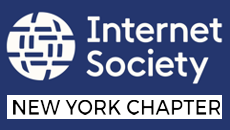Perspectives on the #IANA Stewardship Transition Principles @InternetSociety

[By Sally Wentworth – Internet Society VP,Global Policy Development]
As the IANA Coordination Group (ICG) gets set to release its call for public comments on a combined proposal to transition the stewardship of the IANA functions, it is critical that we understand how the IANA stewardship principles as well as the IANA functions fit into the broader context of the Internet’s operations and history.
Back on 14 March 2014, the U.S. Government National Telecommunications and Information Administration (NTIA) announced its intent to transition stewardship responsibility for the Internet Assigned Numbers Authority (IANA) functions to the global, multi-stakeholder community. It asked the global Internet community to develop a plan that will ensure performance of the IANA functions continue to adhere to fundamental Internet principles after the transition.
In the coming weeks and months, as stakeholders continue to deliberate on accountability mechanisms, discussions will now shift to a consideration of whether the outcome of all this work is in line with the principles outlined in NTIA’s March 2014 announcement.
In considering the principles, or so-called “NTIA criteria”, it’s crucial that we see these not as the product of the United States government but rather as the fundamental characteristics that have enabled the Internet to serve as a platform for seemingly limitless innovation around the globe. For the long-term growth and stability of the Internet, the administration of the IANA functions must continue to adhere to those principles, which are grounded in the history, origins and design of the Internet.
At the Internet Society, we’ve done some thinking about these principles and have put together a thought-piece that discusses the origin and operational relevance of these principles to the IANA functions. Our main goal was to show how they are reflective of broader Internet principles which have been adopted and embedded through years of international consensus.
The purpose of this document is twofold: first, it is to provide some global context for these principles. Second, and perhaps more importantly, it is to demonstrate that these principles are ingrained in the network’s architecture.
As we all begin to step back from the drafting work and look at the bigger picture, I hope this piece is a useful contribution to a discussion about how the IANA stewardship transition fits into the broader narrative and consensus about globalization, openness and security/stability of the Internet going forward.

Reply